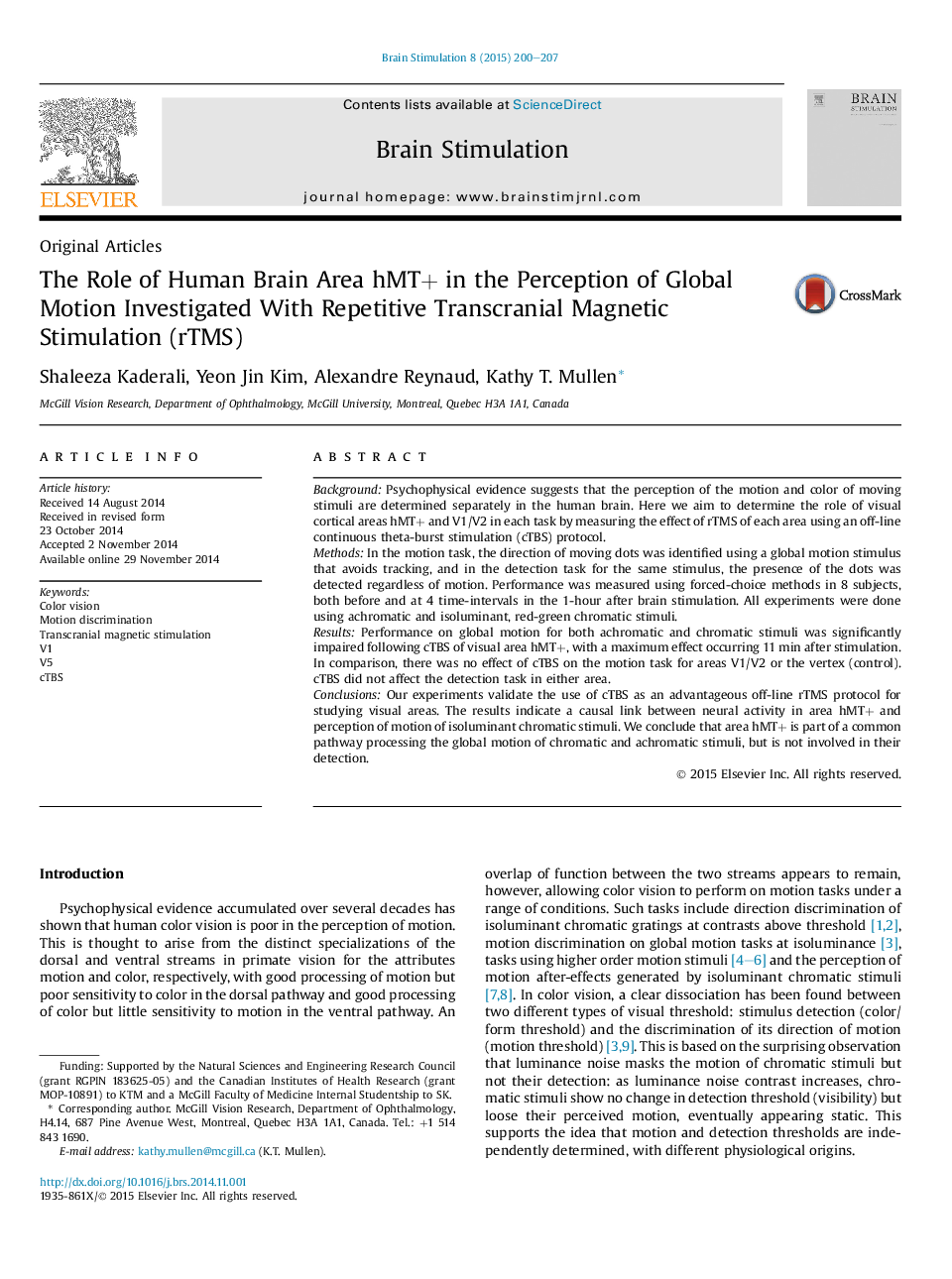| کد مقاله | کد نشریه | سال انتشار | مقاله انگلیسی | نسخه تمام متن |
|---|---|---|---|---|
| 6006033 | 1184674 | 2015 | 8 صفحه PDF | دانلود رایگان |

- rTMS with an off-line cTBS protocol of visual areas hMT+ and V1 in the human brain.
- Deficits in chromatic and achromatic motion perception 11Â min after rTMS of hMT+.
- No deficits for stimulus detection after stimulation of either area.
- hMT+ mediates the perception of motion of chromatic and achromatic stimuli but not color detection.
BackgroundPsychophysical evidence suggests that the perception of the motion and color of moving stimuli are determined separately in the human brain. Here we aim to determine the role of visual cortical areas hMT+ and V1/V2 in each task by measuring the effect of rTMS of each area using an off-line continuous theta-burst stimulation (cTBS) protocol.MethodsIn the motion task, the direction of moving dots was identified using a global motion stimulus that avoids tracking, and in the detection task for the same stimulus, the presence of the dots was detected regardless of motion. Performance was measured using forced-choice methods in 8 subjects, both before and at 4 time-intervals in the 1-hour after brain stimulation. All experiments were done using achromatic and isoluminant, red-green chromatic stimuli.ResultsPerformance on global motion for both achromatic and chromatic stimuli was significantly impaired following cTBS of visual area hMT+, with a maximum effect occurring 11Â min after stimulation. In comparison, there was no effect of cTBS on the motion task for areas V1/V2 or the vertex (control). cTBS did not affect the detection task in either area.ConclusionsOur experiments validate the use of cTBS as an advantageous off-line rTMS protocol for studying visual areas. The results indicate a causal link between neural activity in area hMT+ and perception of motion of isoluminant chromatic stimuli. We conclude that area hMT+ is part of a common pathway processing the global motion of chromatic and achromatic stimuli, but is not involved in their detection.
Journal: Brain Stimulation - Volume 8, Issue 2, MarchâApril 2015, Pages 200-207